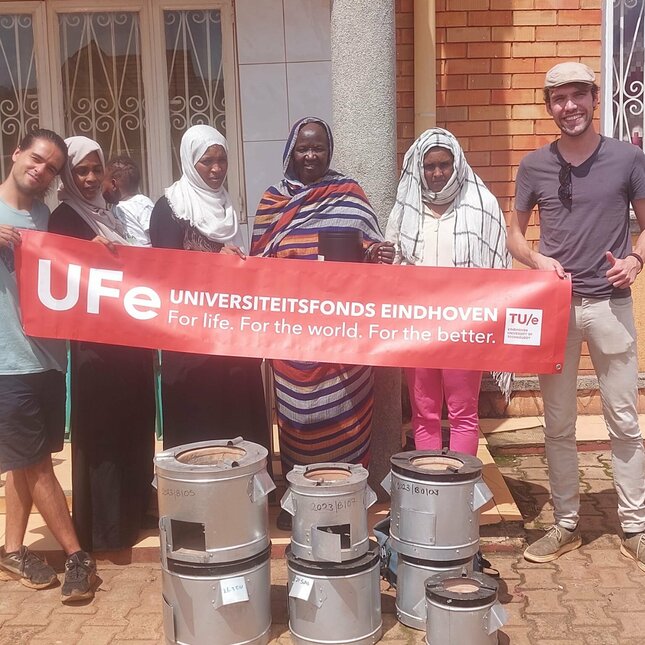
In many countries people use traditional methods and stoves for cooking. This poses several problems. Safety is an obvious one. Also, the conventional fuels are a source of CO2- and other emissions and cause health problems. When family members become sick, their children – especially the daughters – must take care of them. This obligation and the fact that they often spend hours collecting firewood, keeps them from school. They don’t get a proper education and end up in poverty too.
This vicious circle is hard to break. But that didn’t stop Job Harweg, MSc student in Sustainable Energy Technology at TU/e, and NGO Raising Gaibo from trying. They went out to help Ugandese families improve their lives by improving the way they cook. Uganda has a population of 45 million people. And 99,5% of them still use old-fashioned stoves.
Job’s Internship had two goals: improving the stoves.
Better, cheaper, and more efficient stoves
A new, modernized version of the traditional cookstove had already been created and was being produced. It looks and functions like the traditional ones, while addressing several safety and health-related issues. A more efficient design helped make it less dangerous to use, easier to clean and more fuel-efficient. It also replaced the classic firewood with biomass briquettes. Making this type of fuel easily obtainable would leave children time to visit schools and get a basic education.
Thanks to its smart design and use of basic materials like metal and cement, the new stove cost anywhere between 10 and 20 dollars. That may seem like a steep price, but the biomass fuel is much cheaper than conventional fossil fuels. Families would earn back their investment quickly. The new stove had just one rather important drawback: it was heavy, making it hard to transport and use for women especially.
Improving on the improved stove
As part of the process to address the weight issue, a stove was shipped to the TU/e and examined. As a result, the idea to introduce an air column took shape...
Read full article here